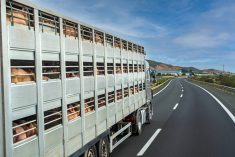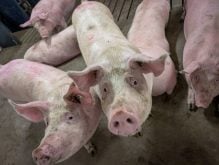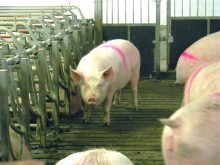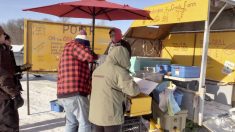Ordinarily the risk of PED infections in Manitoba hog herds rises with the temperatures in the spring.
But for the first time, this year the sector is heading into the usual risk season with an epidemic outbreak already raging.
As of March 30, Manitoba’s office of the chief veterinary officer (CVO) had confirmed 88 cases of porcine epidemic diarrhea since late October last year. Recent cases push the 2021-22 outbreak ahead of similar surges in both 2019 (82 cases) and 2017 (80 cases), making it Manitoba’s largest PED outbreak to date.
Read Also
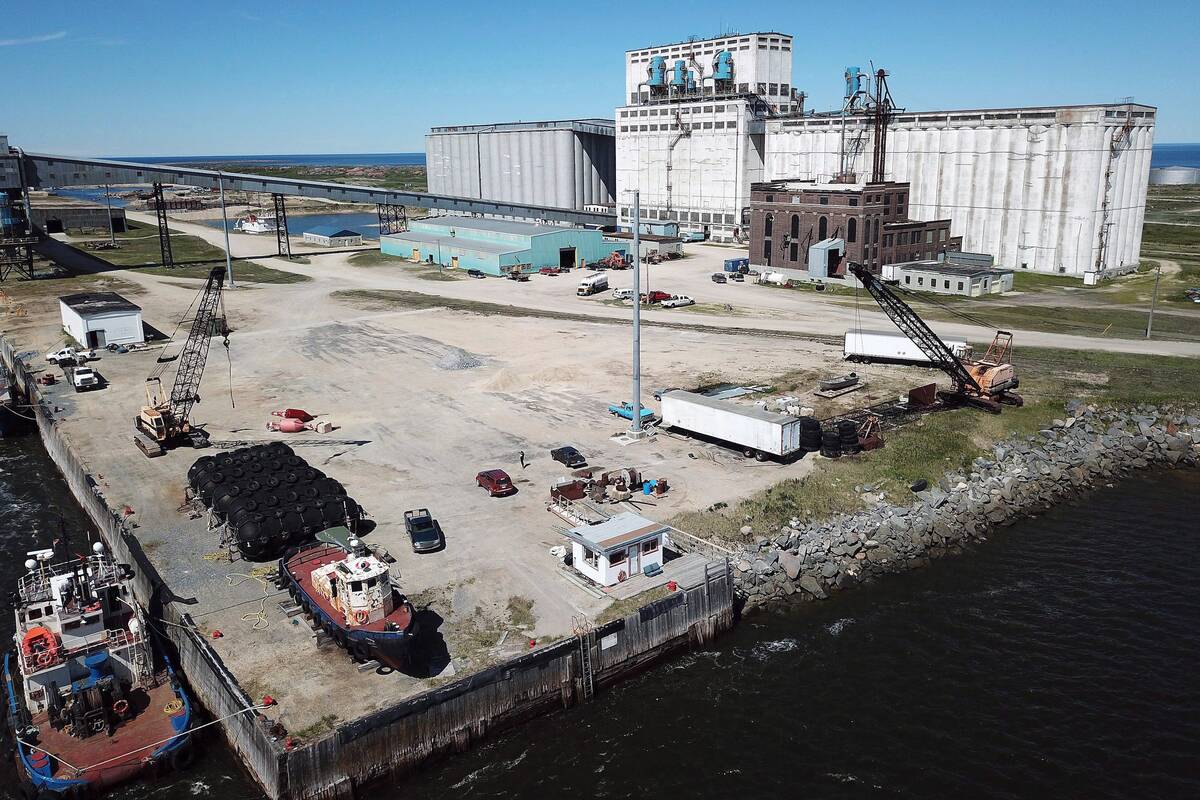
Sizing up Port of Churchill expansion challenges
The Port of Churchill has some hurdles to clear before it can become the sea trade powerhouse for Manitoba and Canada that governments and the agricultural industry hope it will.
Why it matters: The infamous neonatal disease is linked to 80 to 100 per cent losses of piglets in the first two weeks of life and comes with a serious financial and morale hit for any infected barn.
This year will be the first that the hog sector starts off the warmer months, the usual window for PED infection, with an active outbreak. Winter has typically offered a lull in new cases, even following the infamous caseloads in 2017 and 2019.
The timing of the outbreak in 2021 — which had seen no new cases until fall — threw things for a loop.
“We are very concerned about the spring and the time of year that we normally see PED arise,” the CVO’s Dr. Glen Duizer said. “We are collectively taking steps as much as we can to mitigate that, manure management probably being one of the biggest ones, but also managing (animal) movements and doing biosecure routing like we’ve done in the past. Doing all the things that we’ve done in previous responses to try and limit the outbreak as we go into the spring.”
- More on biosecurity: Poultry sector in the line of fire
It is not clear whether there will be any kind of cooling-down period on PED this year, Duizer said, although he stressed that he has no prediction on how the outbreak will trend over the coming weeks or months.
Changing gears
In January 2022, Duizer noted that a fall-winter outbreak shifted the emphasis on factors playing into disease spread. Animal movement, biosecurity breaches, exposure at high-traffic sites and area spread, among others, all still played a part, he noted. At the same time, cold weather had made for new challenges when it came to disinfecting contact points at those high-traffic sites. Proper on-farm biosecurity was also harder. Transport gaps exacerbated the issue.
“It’s been a challenging time of year with the pandemic, with winter conditions — a very severe winter with both cold weather and heavy snow that has challenged everything, but in particular transport and transport biosecurity,” he said. “Having enough trucks, enough drivers. Dealing with cleaning and disinfection of trucks in cold weather has been a challenge.”
Cases swelled in the first month and a half of 2022 before hitting an abrupt gap in mid-February. As of March 5, however, new infections had once again begun to pick up speed, leading to another 15 confirmed cases that month.
The CVO is still investigating how a number of current cases broke. In particular, there are several cases within the main hot zones in southeast Manitoba where it has been difficult to isolate the “smoking gun,” Duizer said.
Other cases have been linked to animal movement, either because animals were shipped before infection was apparent, or because of space constraints.
The industry will now also have to contend with the usual warm-season infection vectors.
Cam Dahl, general manager of the Manitoba Pork Council, noted the shift in risk as the landscape thaws.
Spring field work brings dust management to the fore, he noted — windborne dust being a suspect in several infections over recent years. Likewise, he said, any mud tracked into a barn or yard becomes an issue, and even more so as farms empty their manure reservoirs onto the fields.
Like Duizer, he highlighted manure management.
“A sector committee of manure management specialists and applicators has reconvened to discuss spring options for manure application of both PED-positive and -negative farms, with the primary goal being risk mitigation,” Dahl said.
He added that the pork council is working with that group to report “higher-risk spread events this coming spring along with enhanced on-farm biosecurity protocols during manure application season.”
The council is urging producers to tighten up their biosecurity and to keep a watch on the weather when spreading manure this spring. Spreading is a job for a less windy day, it advises. Farms should also plan to keep barns tightly closed and avoid moving animals during local manure-spreading operation. Tighter protocols on barn entry and liming driveways are both also on the council’s checklist.
Silver lining
It’s not all bad, however, Duizer said.
Spring will ease the cold weather challenges the sector had been facing until this point, he said. At the same time, the timing of the outbreak means that more sites, and sow barns in particular, will be going into the peak PED season having already had an exposure.
“There will be a significant number of herds that will have a high level of immunity because they are coming off the high-risk period of the disease and they’re working their way through their elimination strategies,” he said.
Barns that had dodged infection so far, however, will “definitely” be at risk, he added.
“All the key on-farm preventive measures that we’ve seen previously, such as farm-level biosecurity, managing and limiting people coming onto the farm and handling things like transport and feed and all of that, taking the extra steps to prevent transmission that we’ve done in previous years, will all apply,” he said.
Work on a PED working group is also ongoing.
The industry announced the value-chain working group — which will include an analysis of PED management measures from the Western College of Veterinary Medicine — earlier this year. The Manitoba Pork Council expects the first recommendations to be released by late spring or early summer 2022.




